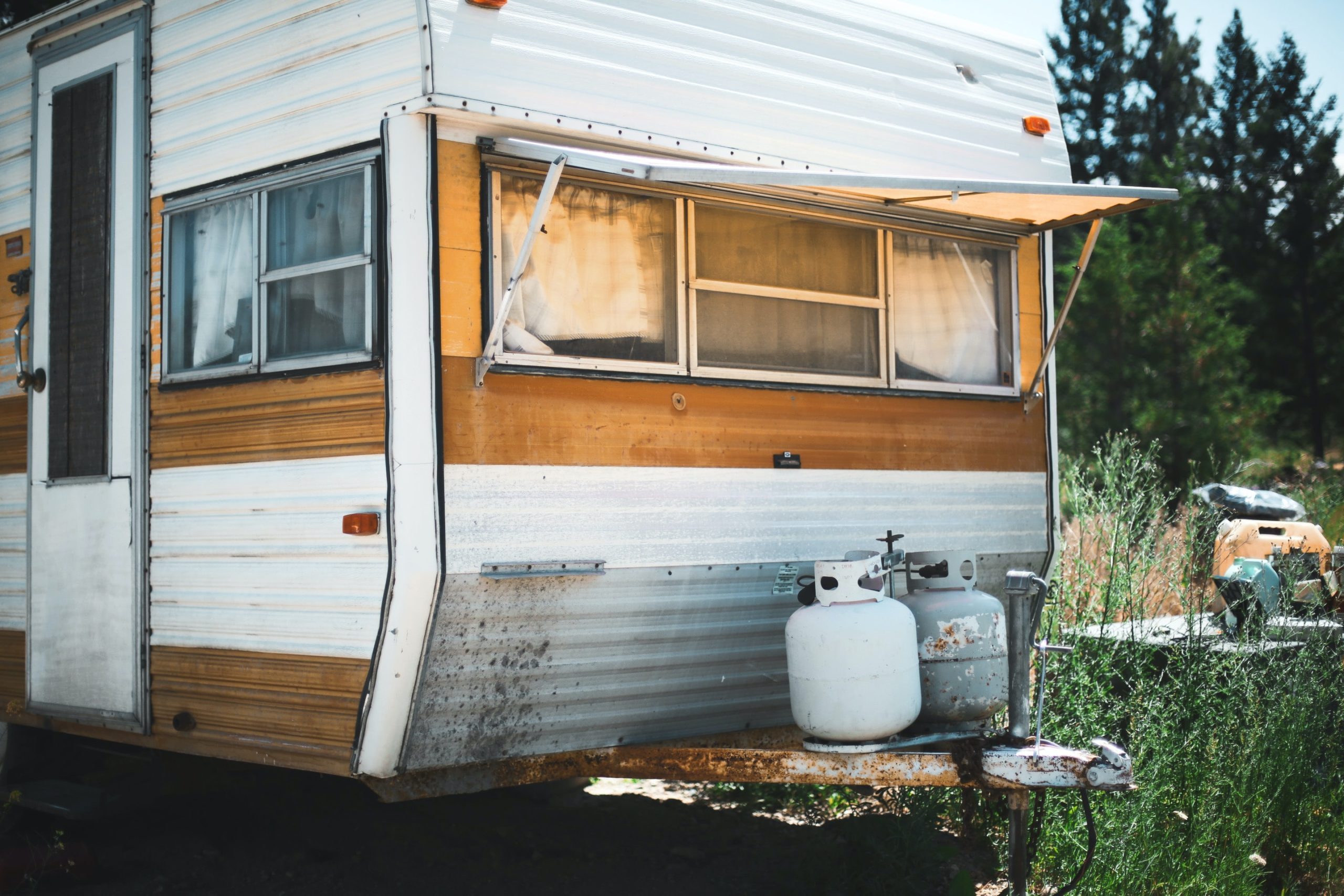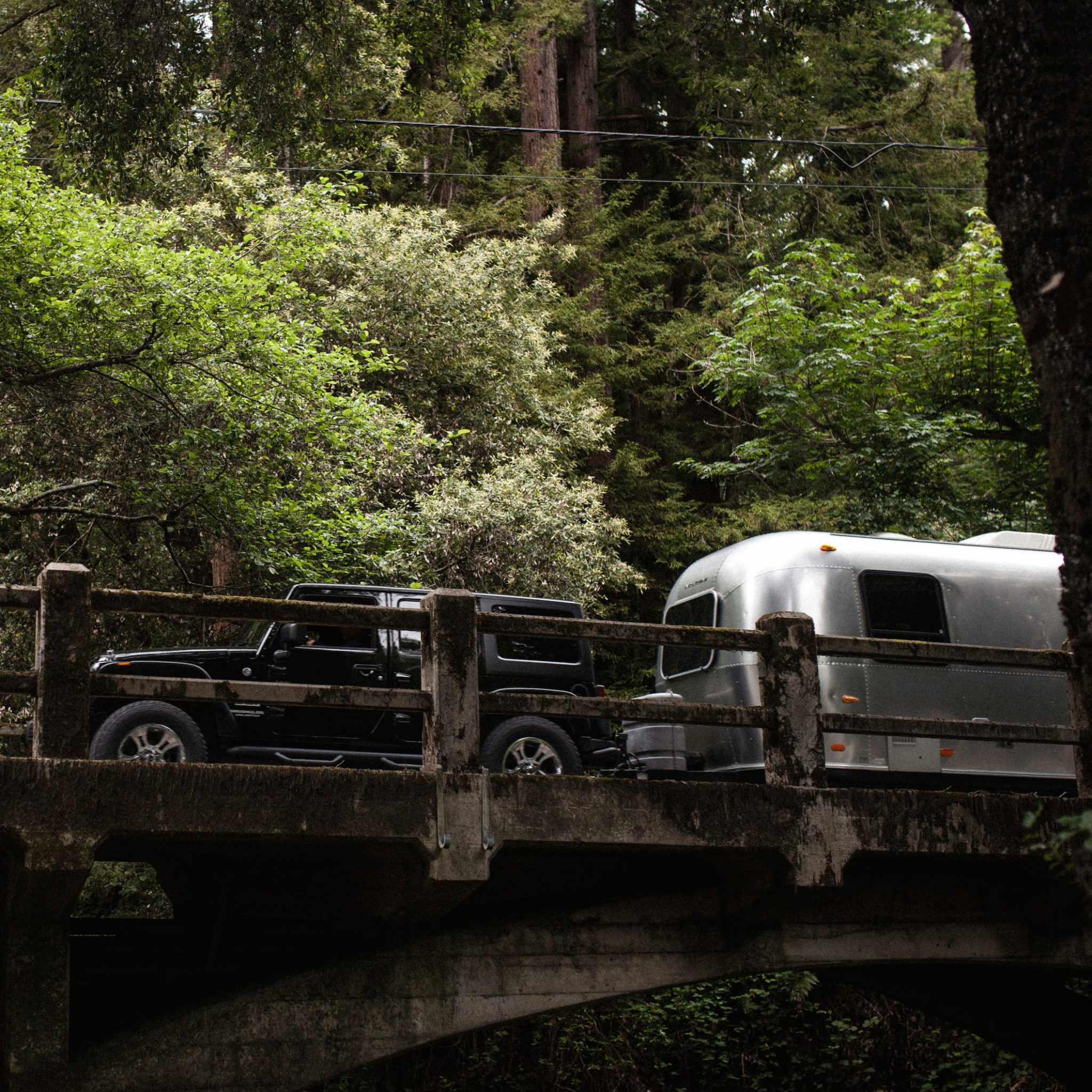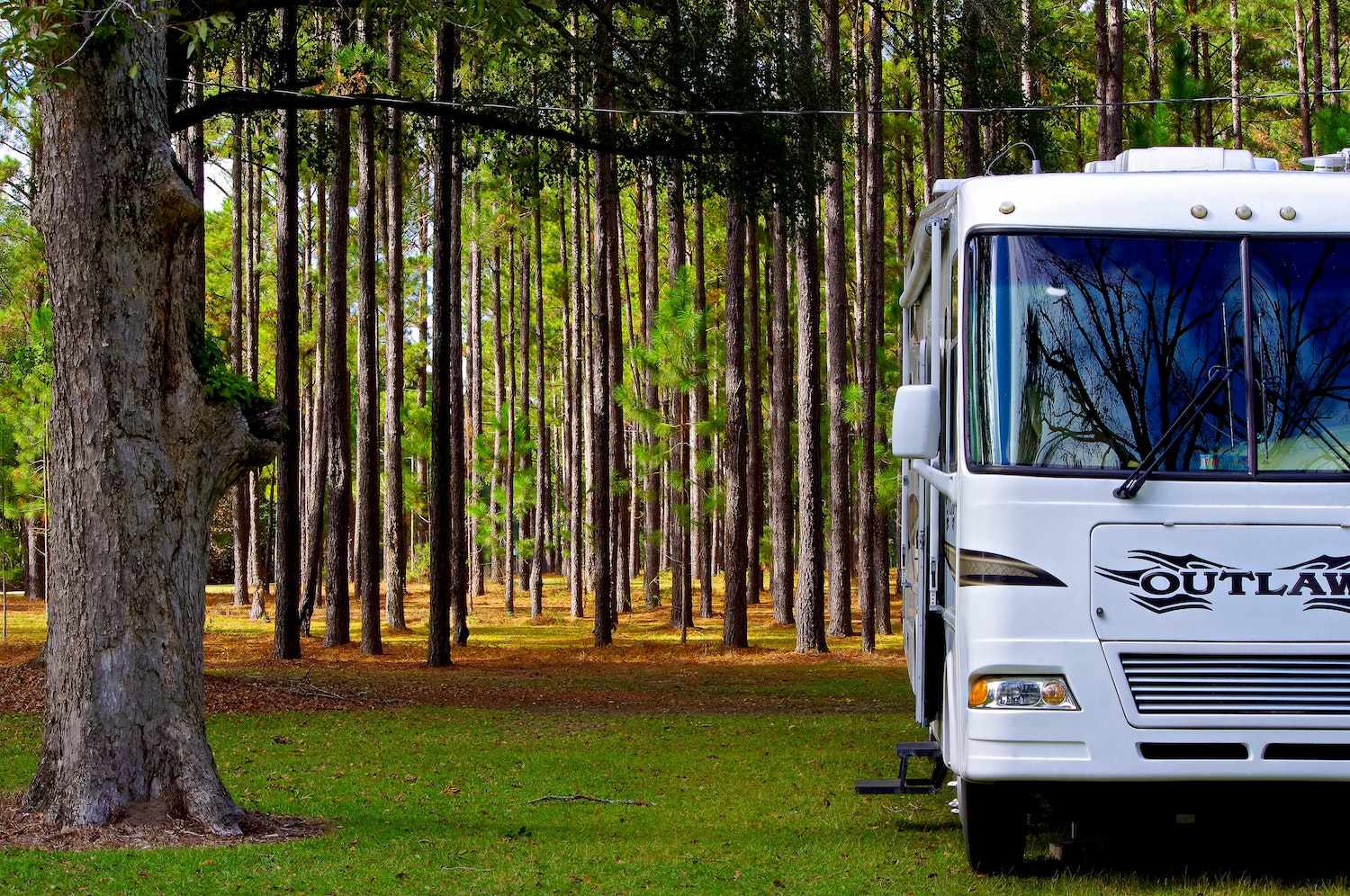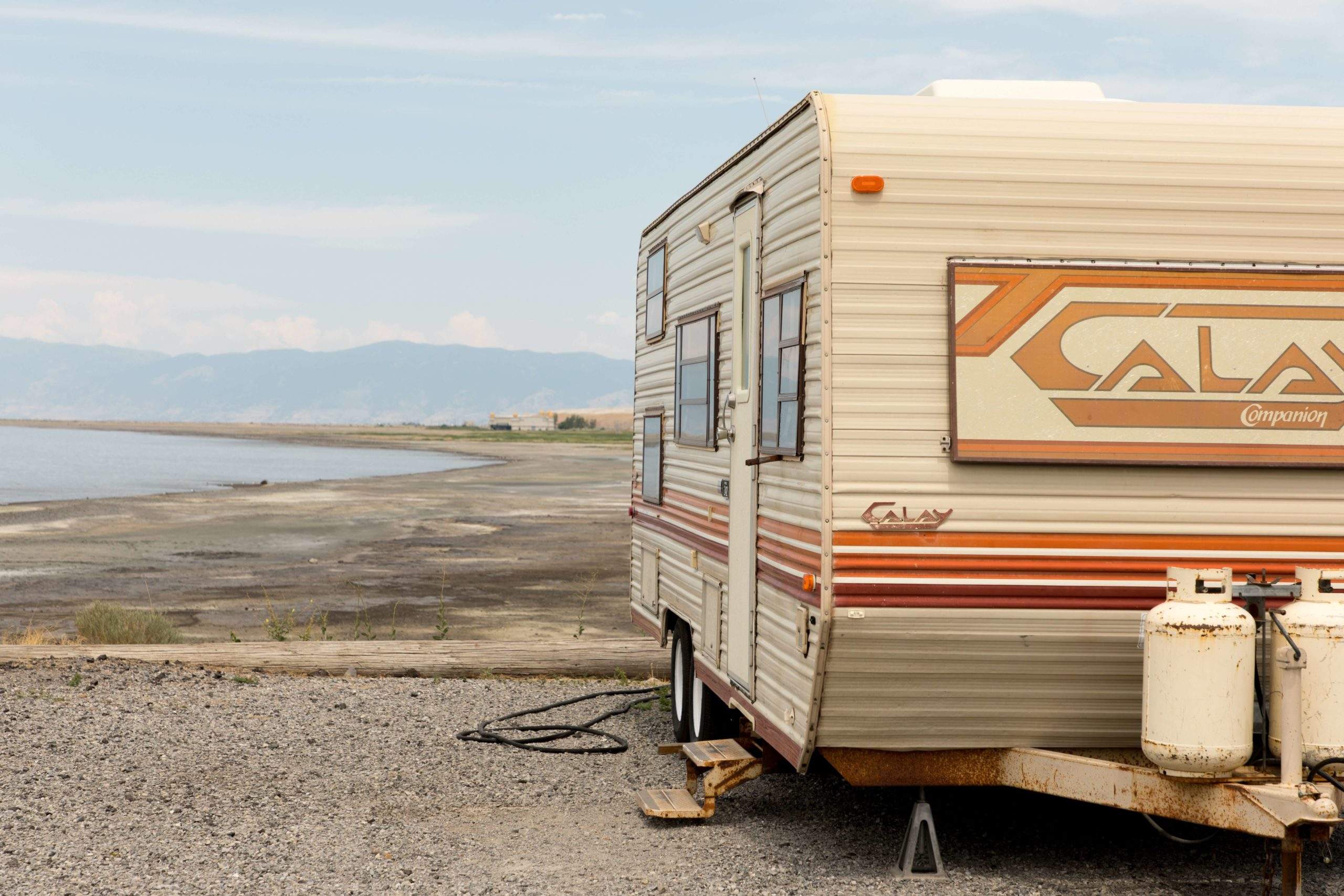One of the biggest advantages of RVing is getting to enjoy the comforts of home wherever you go. Several things make this possible onboard your RV including the water and sewer system, electric hookups, and, of course, your RV propane tanks.
You may think that your propane is only used for cooking, but the fuel actually plays a bigger role in your RVing experience. If you’re unfamiliar with propane, handling the tanks may be an intimidating task. We’re here to demystify your RV’s propane tank and teach you everything you need to know about it, including:
RVs For Rent Near You
- What the RV propane tank is used for
- The types and sizes of tanks
- How to fill your propane tanks up
- Accessories you may need
- General propane safety tips
Let’s take a look!
What is an RV propane tank and what is it used for?
Propane— which also goes by terms like liquified petroleum gas (LPG) or simply LP gas— serves as the fuel for many of your favorite RV amenities. The colorless, nontoxic compound is compressed and stored as a liquid in specially-designed tanks, which makes it easy to carry and manage.

It’s not uncommon to see propane power the following appliances in an RV:
–Barbeque grills and other small appliances
Whether you’re at a luxury campsite or boondocking in the wilderness, propane is a reliable fuel that you should take advantage of if your RV is equipped for it.
Types of RV propane tanks
There are two main types of propane tanks: DOT cylinders and ASME tanks. Here’s how they differ.
DOT cylinders
DOT cylinders are probably what you think of when you imagine a propane tank. You’ll find these cylindrical tanks situated vertically on the tongue or back bumper of towable trailers like campers, fifth-wheels, and popups.
DOT tanks are not permanently fixed to the RV, meaning you can easily move them to a different location or swap them out. You’ll also commonly see these in pairs on RVs since they are smaller.
They are called DOT tanks because they are regulated by the Department of Transportation.
ASME RV propane tanks
ASME tanks, which are approved and regulated by the American Society of Mechanical Engineers, are most often found on motorhomes. Unlike DOT cylinders, ASME tanks are permanently affixed to RVs. You’ll usually find a singular tank positioned horizontally underneath the cabin close to the main entryway.
RV propane tank sizes
Propane tanks for RVs also come in different sizes.
The two most common tank sizes, especially when it comes to DOT cylinders, are 20-pound and 33-pound tanks.
While 33-pound tanks hold more propane, 20 pounders are much more common and available at grocery stores, gas stations, and more. 33-pound tanks are harder to come by, which can be inconvenient.

Since ASME tanks are permanently affixed to the RV, you’ll find them in a variety of sizes. Some may be as small as 20 pounds, but others may hold as much as 100 gallons— a whopping 420 pounds— of propane.
How long do RV propane tanks last?
How long your propane tanks last will depend on three things:
- How much propane they hold
- How many appliances use propane
- How often you use those appliances
If you want to estimate how long your propane tank will last you, you’ll need to put a pencil to paper and do some math.
How to estimate RV propane usage
First, you’ll need to know how much propane your tank holds. Keep in mind that tanks should only be filled to 80% of their capacity to give the gas room to expand.
Once you know how much propane you have in your tank, you’ll want to determine your tank’s British Thermal Unit (BTU) capacity.
- In one gallon of propane, there are 91,502 BTUs.
- In one pound of propane, there are 21,548 BTUs.
So if at 80% capacity, your tank can hold 20 pounds of propane, you’d calculate the BTUs by multiplying 21,548 x 20, which equals 430,960 BTUs.
Next, you add up the BTU demand of your propane-powered appliances. Following the example, you add up the demand of your stove, water heater, and refrigerator and get 30,100. You then divide the total BTU capacity by the hourly demand— so 430,960 by 30,100— to get how long your tank will last— 14.31 hours— when the appliances are being used.
Of course, you don’t use all the appliances constantly. For instance, if you calculate that you can run your stovetop for 30 hours, it could easily last you your whole trip, not just a day and some change. Be sure to take your actual usage into consideration when doing calculations.
How to fill RV propane tanks
Filling up a propane tank can be intimidating at first, but it’s not a difficult task.
The first thing you’ll want to do is identify whether you have a DOT or ASME tank. If you have DOT tanks, you can simply load those up in your tow vehicle and head to a refill station. If your tank is an ASME model, you’ll have to drive your motorhome to the refill station.
Where to fill RV propane tanks
Luckily, propane is common and readily available near most places in the United States, so finding a place to refill your tank shouldn’t be too hard. Common places to find propane filling stations include:
- Propane suppliers
- Gas stations
- U-haul stores
- Hardware stores
- RV dealerships or repair centers
- Campgrounds
Always be sure to call or look online before you stop in somewhere to make sure they offer propane tank refills. Some locations of a chain may not offer this service. If you’re having trouble finding a location, look online or ask your campground host if they know of a place nearby.
Filling the tank
Many times, propane filling stations will refill your tanks for you. If you happen to come across a self-serve station, however, here’s what you need to keep in mind.

Before you fill your tank, be sure to read your RV’s owner manual for any special instructions. Also, pay attention to any posted instructions at the filling station. If you have any questions or are unsure how to operate a station’s equipment, ask an attendant for help.
In general, you’ll follow the following steps when refilling DOT cylinder tanks:
- Ensure that your propane tank has an overfill protection device. If your tank has a triangular handle with the abbreviation OPD stamped on it, you are good to go! If it doesn’t, you cannot safely refill the tank.
- Visually inspect your DOT tank. Look for damage to valves, rust, dents, bulges, etc. If you find damage, do not refill the tank.
- Check the expiration date on the top of the tank. DOT tanks are only good for 12 years. If it is expired, you’ll need to get a new one.
- If your tank is good to fill, start by determining how much your propane tank holds. If the station uses a scale, this will help determine what to fill it to.
- Connect your tank to the supply tank.
- Open the valve on your tank to let propane inside.
- Open the valve on the supply tank to let propane flow.
- Close the valves when the tank is full.
- Open the bleeder valve on the tank to release excess propane.
- Remove the refill hose and return it to its proper location.
If you’re filing an ASME tank, you’ll do the following:
- Visually inspect your ASME tank. Look for damaged valves/hoses, shell damage or deterioration, and missing labels or markings. If you find any issues, be sure to get them checked out before you refill your tank.
- Unscrew the cap on the intake valve.
- Attach the propane hose to your tank.
- Open the close-release valve to allow propane to flow in.
- Open the close-release valve on the refill hose to start refilling.
- Open the bleed valve on the tank to release a bit of propane; once this valve steams some propane, you should be full.
- Once your tank is full, double-check the gauge.
- Close the bleed valve and the close-release valves on your tank and the refill hose.
- Unscrew the refill hose and return it to the proper location.
TIP: Always wear neoprene gloves when refilling. Liquid propane is extremely cold and can cause frostbite.
Exchanging RV propane tanks
If you use a DOT cylinder tank and don’t want to go through the hassle of refilling, you can always do a propane tank exchange. Exchange centers are common and located everywhere from gas stations to grocery stores. Though this option is more expensive than a refill, you’ll simply drop off your old tank and take a new one with an exchange.
RV propane accessories to have
If you have a propane tank, specifically a DOT cylinder, you’ll want to invest in a few propane accessories.
RV propane tank holder and cover
You don’t want to just set your propane tanks down willy-nilly on the front of your trailer. It’s important to mount them securely with a propane tank holder. This will ensure that your propane tanks are safe while traveling and prevent them from getting damaged or jostled around.
Similarly, your propane tanks located outside your rig can take a real beating from sun, rain, road debris, and more. It’s important to keep them protected if you can with an RV propane tank cover.
Propane tank gauges
Most, if not all, ASME tanks come with a gauge, which can help you determine how much fuel you have left and when you should be worried about refilling. If you have a DOT tank, consider purchasing a meter that can be affixed to the valve.
Propane regulator
This isn’t necessarily an accessory— it’s a must-have. Your propane regulator controls the flow of gas from the tank to your appliances. It also serves as a safety barrier between the high pressure of your propane tank and your appliances.
RV Propane Maintenance Checklist
Here’s a propane tank maintenance checklist for RVers, with detailed steps to ensure your propane system runs smoothly and safely:
Inspect for Leaks Regularly
Frequency: Monthly or before each trip.
Apply a solution of soapy water to the tank’s valves, hoses, and fittings. If bubbles appear when the gas is on, this indicates a leak. Fix leaks immediately by tightening connections or replacing worn parts.
Check Hoses, Valves, and Fittings
Frequency: Every 3-6 months.
Inspect hoses and fittings for signs of wear, cracking, or corrosion. Over time, hoses may dry out, leading to gas leaks. Replace any damaged or brittle parts to avoid safety hazards.
Clean the Tank Exterior
Frequency: As needed, typically every season.
Wipe down the tank with a damp cloth to remove dust, debris, or any buildup that could interfere with function or promote rust. Cleaning can also make it easier to spot cracks, rust, or other wear that might affect performance.
Test Propane Detector
Frequency: Monthly.
Propane detectors are essential for detecting gas leaks in enclosed spaces. Press the “test” button to ensure your propane detector is working properly. Replace the batteries regularly, and replace the detector every 5-7 years, per manufacturer guidelines.
Monitor Tank Gauge and Refill as Needed
Frequency: Before each trip or as needed.
Regularly monitor fuel levels and plan refills accordingly. Keeping an eye on fuel levels helps you avoid running out mid-trip and ensures you always have an ample propane supply.
Ensure Proper Ventilation
Frequency: Before each trip.
Check that vents for propane appliances like stoves, refrigerators, and heaters are unobstructed and clear of debris. Ventilation is crucial for safety, as it prevents the accumulation of propane gas inside the RV.
Inspect Mounting Brackets and Straps
Frequency: Annually or as needed.
For DOT tanks that need to be removed for refilling, ensure mounting brackets and straps are in good condition and secure. Loose or worn brackets can cause the tank to shift or disconnect, which is a major safety risk.
Replace Old or Expired Tanks
Frequency: Every 10-12 years, per the tank’s expiration date.
Inspect the expiration date stamped on the tank, as propane tanks generally have a lifespan of around 10-12 years. Expired tanks may have weak seals or other safety issues. Replace any tank that’s past its date or showing significant rust and wear.
By following these maintenance steps, you can ensure that your RV propane system remains efficient, safe, and ready for each journey.
RV propane tips
Propane can be a lifesaver out on the road, but it can also be extremely dangerous if not handled properly. Here are some basic tips to keep in mind when carrying propane on your RV.
Here are some additional tips to keep in mind.
- Don’t paint propane cylinders, valves, or mounting hardware. Doing so may affect valves, mask issues that may arise, or even cause a complete system failure.
- Turn your propane off when traveling— even the fridge. You might hear RVers say that they use propane to keep their fridge cool while on the road. This is not safe and can cause catastrophe in the right conditions.
- Always ventilate your RV when using a propane appliance. Burning propane produces carbon monoxide, a colorless, odorless, and toxic gas. Make sure to crack open a window or two anytime you use a propane appliance indoors.
- Know where you can take your propane. In the United States, transporting propane in some tunnels is prohibited. Be sure to check your route for these tunnels before setting out on your journey.
- Keep your propane out of the heat. Try keeping your propane shaded and avoid placing it in areas where temperatures are above 120 degrees Fahrenheit.
- In the winter, make sure your tank is covered. Though low temperatures pose no threat, ice and snow can shorten the life of your tank.
If you ever suspect something is amiss with your propane system, investigate the issue before using any of your propane appliances. If you can’t solve the problem, take it in to a professional who can get it fixed and have you back on the road.
RV Propane FAQ
Here’s a helpful FAQ about RV propane systems, covering safety, maintenance, and common questions about usage.
What does propane power in an RV?
Propane is commonly used in RVs to fuel appliances like stoves, ovens, water heaters, refrigerators, and furnaces. Some RVs also use propane to power generators or provide backup power for certain systems. Propane is a versatile energy source for off-grid camping or “boondocking,” allowing you to stay in places without electric hookups.
How can I tell if my propane tank is low?
Many RVs come with a propane gauge on the tank, but these can be inaccurate. You can weigh the tank (empty tanks are about 17 lbs for a 20 lb tank) or use an external gauge that attaches to the tank. Another method is the warm water test: pour warm water over the side of the tank and feel where it cools to gauge the propane level, as propane absorbs heat and will feel cooler than the tank’s metal.
How can I safely use propane in my RV?
Safety precautions are essential with propane. Install propane and carbon monoxide detectors in your RV and test them regularly. Check propane lines and connections for leaks by applying soapy water to them and looking for bubbles when the gas is on. Always keep the propane tank valve off when not in use, and ensure adequate ventilation when using propane-powered appliances.
Can propane freeze in cold weather?
Propane itself doesn’t freeze until -306°F (-188°C), but in extremely cold temperatures, propane flow can decrease as the pressure drops inside the tank. If you’re camping in freezing conditions, insulating the tank or keeping it in a warmer space can help maintain adequate pressure. Running the tank at higher levels helps ensure a consistent flow of propane in cold weather.
How often should I inspect my RV propane system?
Regular inspections are important for propane safety. At least once a year, inspect propane hoses, valves, and fittings for signs of wear, cracking, or leaks. Many RV service centers offer propane system inspections, which are worth considering if you use propane frequently or have an older RV.
How do I safely store extra propane tanks?
Extra propane tanks should be stored upright in a cool, ventilated area, away from direct sunlight and heat sources. Never store propane tanks inside the RV, as leaks can lead to dangerous gas accumulation. A secure outdoor compartment, such as a designated propane locker, is ideal.
Fueled up and ready to go
A propane tank is integral to the amenities that your RV offers, so it’s important to understand how it works and how to best care for one. Keep these helpful tips in mind and you’ll be sure to be cooking and staying warm wherever you venture to in your RV!
P.S. If you’d like to make some extra income with your RV you can list it for rent here. And Outdoorsy has also partnered with Roamly to offer the best and most cost-effective RV insurance on the market. Click here for an instant RV insurance quote.








